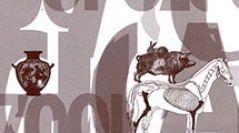

 Anthropozoologica
41 (2) - Pages 141-169
Anthropozoologica
41 (2) - Pages 141-169This article on animal representations in linear rock art is confined to the eastern Pyrenees, between Val d'Aran and the Col de la Perche in Cerdagne. It covers a period in history, between the end of the 3rd c. BC and the arrival of the Romans in the middle of the 1st c. BC, when this region was in disruption because of the Punic wars. At the beginning of the 2nd century BC, the Iberian peoples from the south of the Pyrenees rebelled against the Romans, which led to Cato's harsh repression. After the Roman victory, the mountain people, who until then had been cut off from the military movements and trade activity taking place on the Mediterranean coast, came into contact with immigrants fleeing the conflict to find refuge in the mountains of Catalonia. These immigrants brought with them cultural and religious practices which were to have a long-term influence on the local way of life. From this period, symbols, graffiti and composite scenes were engraved on rocks, using the Iberian alphabet. Animals are widely represented, especially horses and deer. In the second half of the 1st century BC, the Romanization of the region puts an end to this symbolic "art". In the Middle Ages, new engravings appear on the rocks, more figurative but no less rich in symbols derived from the ancient ones.
Pyrenees, open-air sites, caves, surveys, engravings, the Iron Age, the Middle Ages, Iberian.